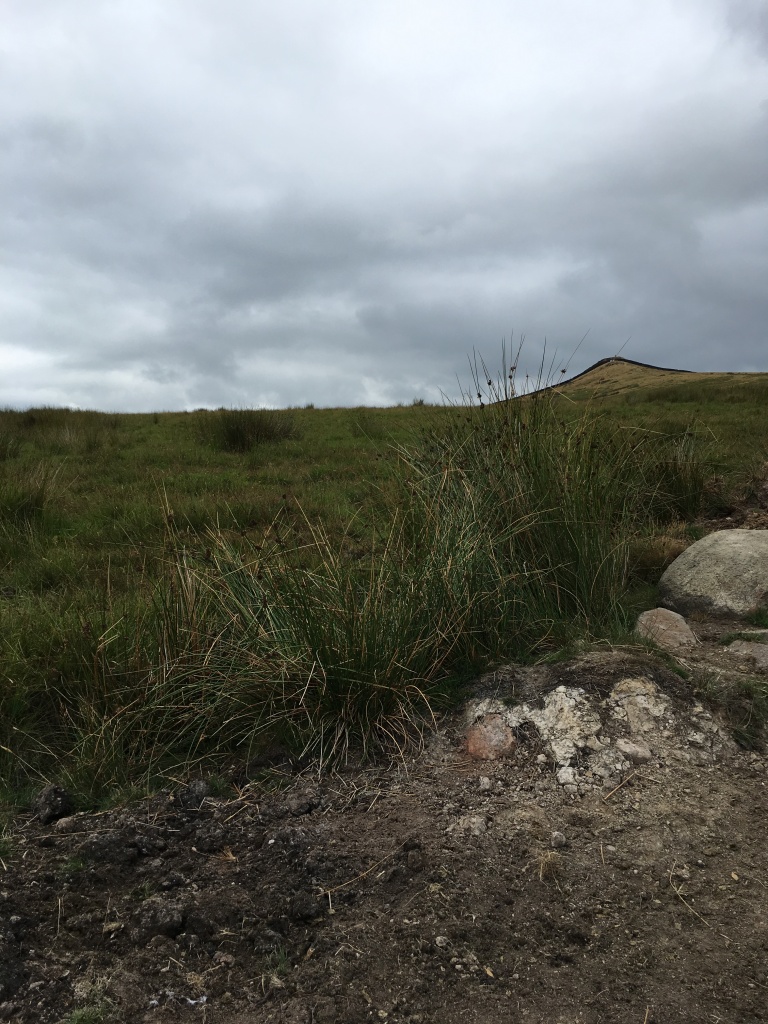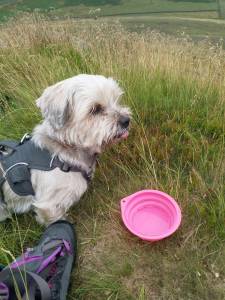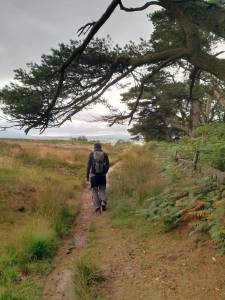For some time I’ve been massively overthinking whether to get a meat cleaver. The kind of meat prep I do doesn’t really demand one and I could wind up dropping a load of money on a big knife I wouldn’t use much. Over lockdown, I’d started watching a lot of the scholagladiatoria channel on YouTube (it’s about medieval weaponry – stick with me, this is going somewhere) and saw Matt Easton reviewing a couple of khukuris from Kailash Blades, based in Nepal. That set me thinking that a khukuri can absolutely function for the heavier end of butchery and can be used for brush clearing, batoning wood, feathering kindling etc. Matt gave both knives a very good review and I thought I’d take a peek to see how much a hand-forged Nepalese khukuri might set me back. The answer was not nearly as much as I was expecting.

I’m not going to give a you a detailed history of the khukuri, there are many others out there with far more knowledge of the subject than I (not least KB themselves). Suffice it to say that KB has a wide range of both traditional and modern takes on this traditional, heavy Nepalese blade. I went with the Fort William Mk-1, which is based on the first standard military issue knife from 1903. I haven’t gone for it for the military heritage (because unearned glory) but for the shape, which I think is beautiful. The KB website lets you select from different blade and handle lengths, different sheaths, grinds, handle materials etc. All of their knives come in 5160 spring steel. It’s a real workhorse carbon steel but not stainless so you need to take responsibility for making sure it doesn’t rust.
Andrew at KB was really responsive and helpful with my enquiries about style and size of khukuri and the options available. He was also really proactive with communications about potential incoming issues with UK customs. And, once I’d received my monster, he had plenty of advice on sharpening this very distinctive blade style. I maintain all my own kitchen knives with a collection of whetstones but had no idea how to manage this thing on that setup (you actually don’t, you need honing rods).
So, I went with a 13″ blade, a short handle (on Andrew’s advice) of stacked leather, traditional sheath and acid-wash finish. The finish is meant to bring out the hamon as these blades are differentially tempered so you get that distinctive line between the softer steel of the back and the hard steel of the edge. It’s very subtle; I could probably bring it out with a bit more polishing. If you’re hoping to see the kind of wavering line behind the edge that you’d get on, for instance, a tachi or a wakizashi, you’re going to be disappointed. This isn’t a criticism, it’s an observation. It’s like comparing geese and ducks – they’re related but they’re different. I’m not a big fan of two of the other finishes (polished and raw) and I think a satin finish will get battered quite quickly on a knife like this. Even if the hamon isn’t absolutely popping, I like the sort of dull (in a good way) colour of the blade and I think it will lend itself nicely to patination. These are personal, aesthetic choices, of course – I really like how the blade has turned out. (Andrew was good enough to respond to this and other points in this blog post – see the comments section below)

Customs problems overcome or anyway sidestepped, my khukuri arrived in early January. This was two months after ordering and the day before my sister’s birthday ( these facts are unrelated). It was extremely well (and protectively) packaged and sharp enough to shave the hairs off the back of my arm. To me, the short handle seemed just a little short and I started to fret I’d made the kind of mistake you can’t really rectify.

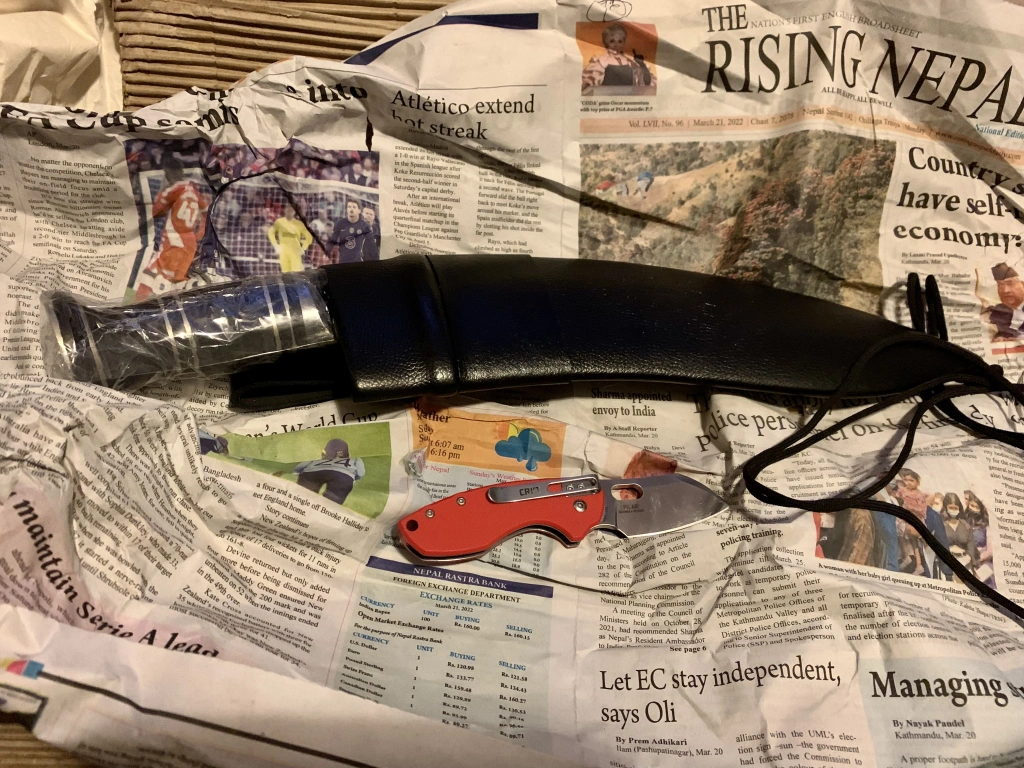
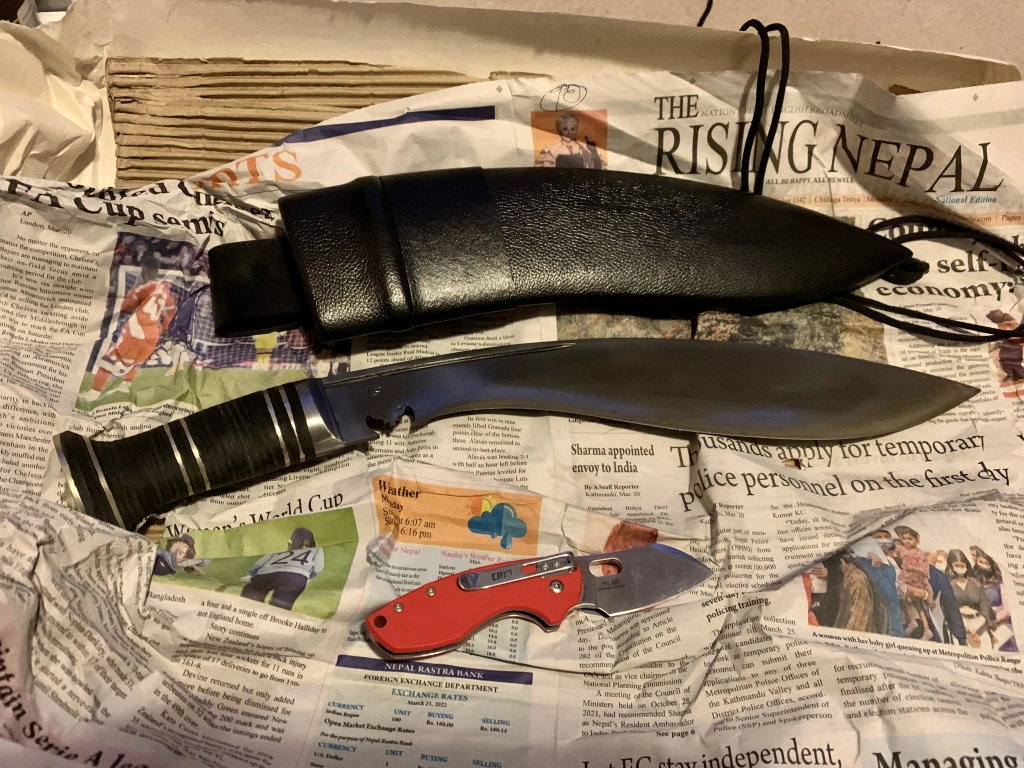
The traditional sheath (or dap) can be hung vertically or horizontally but the frog that attaches it to your belt cannot be rotated around to the other side of the sheath; I think it’s glued in place. If you’re left handed or want to try to wear it horizontally across your back, make sure you order a left-handed sheath (but see comments from Andrew). The thing across your back sounds cool but it’s movie cool, yeah? It looks cool when Deadpool does it but Deadpool has an editor and jump-cuts. You don’t and you’ll struggle to draw it and then spend the rest of your natural life trying to re-sheath it. Or you’ll cut your fingers off. I imagine if I’d enquired about a lace-up frog that also allowed for vertical/horizontal carry then it could have been had for a doubtless reasonable price.
When you say a 13″ blade, it sounds massive and it is – there’s a picture below of it with a 10″ chef’s knife and big folder for comparison. In the hand, though, it doesn’t feel quite like the sword you might be imagining. It’s no EDC but the very weight-forward balance is deceptive, and it feels lively and surprisingly mobile. They’ve done something magical with the grind where it is hollow ground but then it swells back out to become a convex grind. This helps to keep the overall weight down but maintains mass immediately behind the edge to give some impact to your cuts.

Its first job was some garden maintenance. I have an ivy hedge growing over the iron railings around my garden. Last year, I’d trimmed it off about a metre from the floor; it had grown back down and now tendrils were creeping across the decking. It sounds trivial but actually slicing through multiple, woody ropes of ivy at the same time is quite a tough little task. It was accomplished very quickly and without difficulty. That big, weighty fore-end with its curved edge just wants to cut. And once I was swinging it, the short handle suddenly made sense, it really pushed the balance of the blade into each cut. Andrew, I am sorry I ever doubted you.
Next was pruning the buddleja, which had fallen off my winter to-do list because I got an X-box GamePass and Back 4 Blood was on there for free. Anyway, the buddleja was a much more lignified affair than the ivy, with some branches over an inch thick at the base. I went at it progressively to test the blade against thin, whippy limbs through to gradually stouter branches. In less than an hour, I had reduced the bush to something less than a foot high and then reduced the trimmed limbs to shorter lengths that I stacked in the planter to deter the neighbour’s cat from shitting in there. It’s not like buddleja is a crop but I just don’t want to garden around faeces.



During my exertions with the ivy, I had clumsily ploughed the end of the blade into the soil under the hedge. The edge itself had a couple of very minor rolls, which I polished out but I had also bent the very tip, presumably on stones in the soil. This is entirely my fault and not something for which I can fault the blade. I have since taught myself to reshape knife tips and, needless to say, I shall not be making that mistake again. It wasn’t actually as difficult as I had feared and maintaining this beast is actually pretty easy once you get over the hump of the blade shape (that’s a case of clamping it edge up and then running a set of progressively finer honing rods along either side until you have an edge with which you can cleave time itself).
On the kitchen side of things, It’s not had much to do yet although I did decant the carcass bag from the freezer to make some room and some stock. The khukuri absolutely demolished two chicken carcasses and then some rather more robust pork ribs. If there as a problem, it was mostly about having room to swing in my tiny kitchen without turning the overhead cabinets to matchwood.
Most recently, while on holiday with my parents, my dad mentioned that their Christmas tree was still in the garage waiting to become firewood. I was home before them and popped round to theirs. I stripped off the limbs, cut them to fireplace length and then sectioned the trunk, all in in less than an hour.

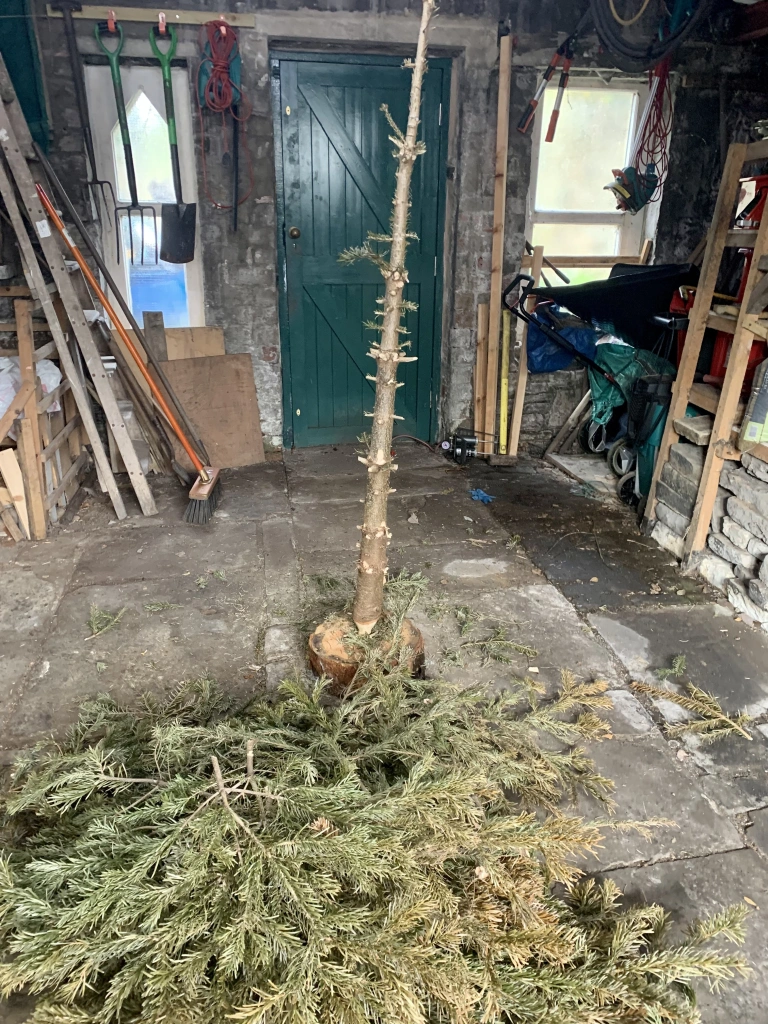
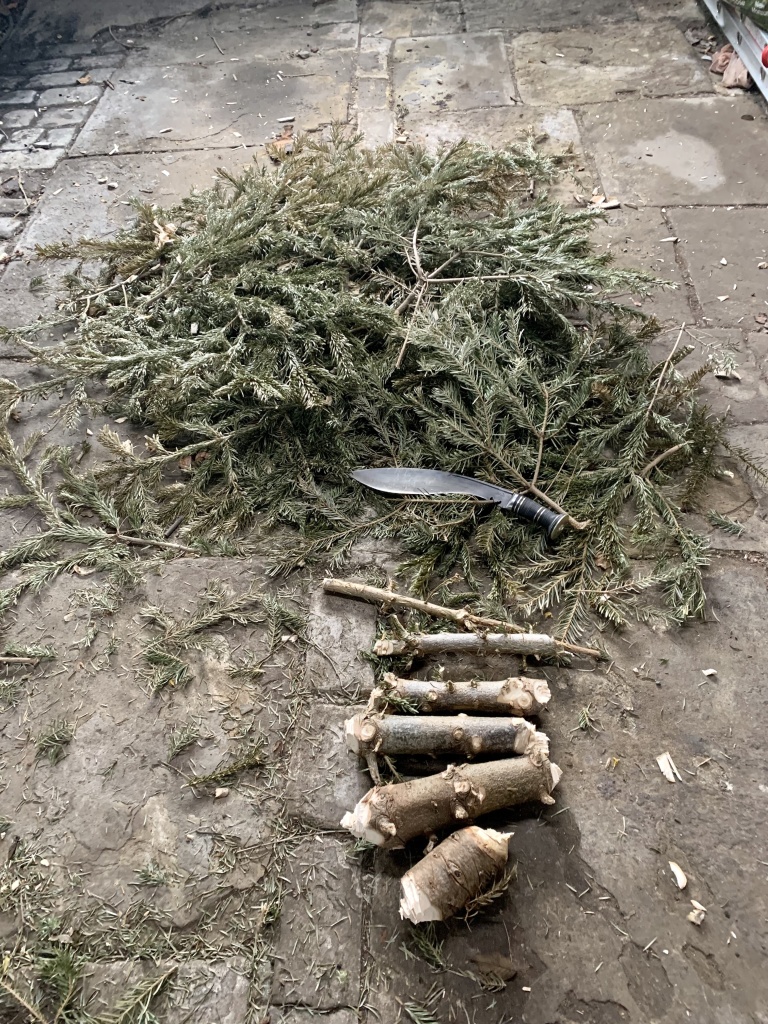
Is there anything I’d change? Um, I don’t know. Although the handle feels good in use, it still looks weirdly short to my eye. But it does feel good in use so… And the metal washers in the stacked leather look sort of brassy, which clashes with the steel furniture? I daresay if I’d asked, I could have had steel washers. In fairness, they do look sort of brassy on the website but I didn’t think. It’s an incredibly minor quibble (but see comments from Andrew).
In summary, this is superb thing. Is the final fit and finish as tidy as some of the high end stuff out there? No, but it’s less than half the price of (for example) the Extreme Ratio Kukri Machette. While it may not have featured in Far Cry 4, it’s a really solid bit of kit; it’s handmade by just one blacksmith from start to finish; it’s an absolute joy to use; KB really supports its blacksmiths; the team there is really good to work with, communicative and open to customisation if you’ve ideas in that direction; and it will undoubtedly still be up for some hard work long after I am gone. Plus it’s going to get better looking as it gets older.
As I’ve noted in another post about knives, carrying a knife in the UK is legally context dependant – you need to have good reason to have one in public. If I were using this to, for instance, clear scrub on a nature reserve then I’m probably ok. If I’m carrying this in a city centre then I am definitely not and I’m probably also an arsehole. I should also add that I have no legal training so don’t rely on this general advice – make sure you do your research.





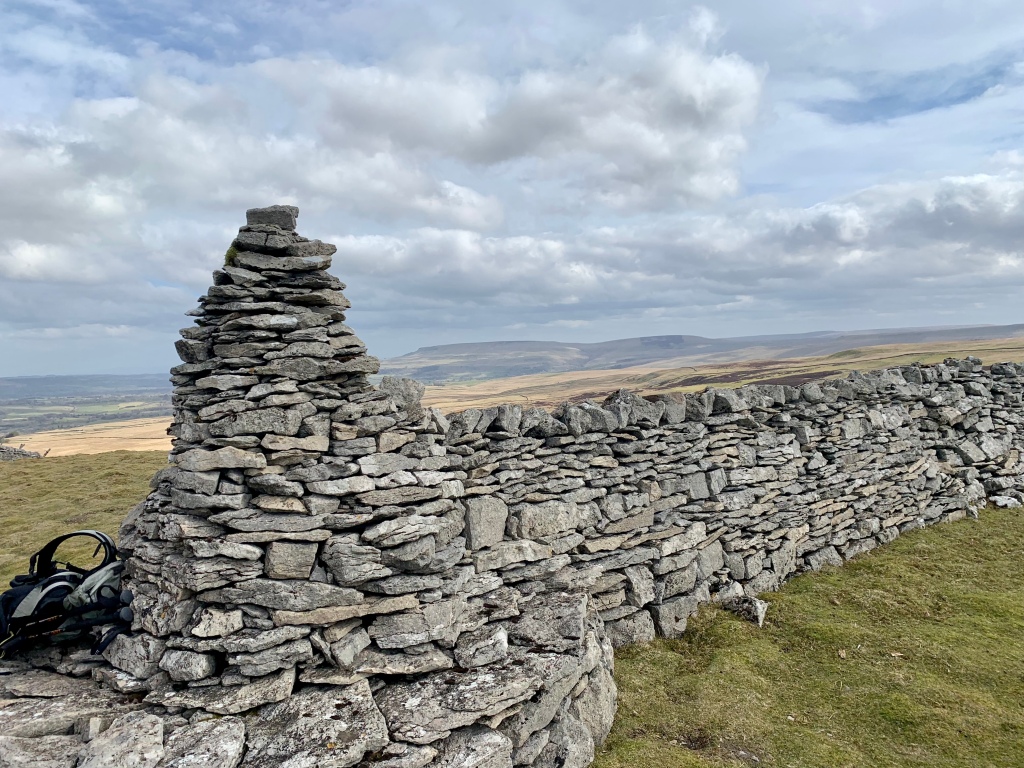
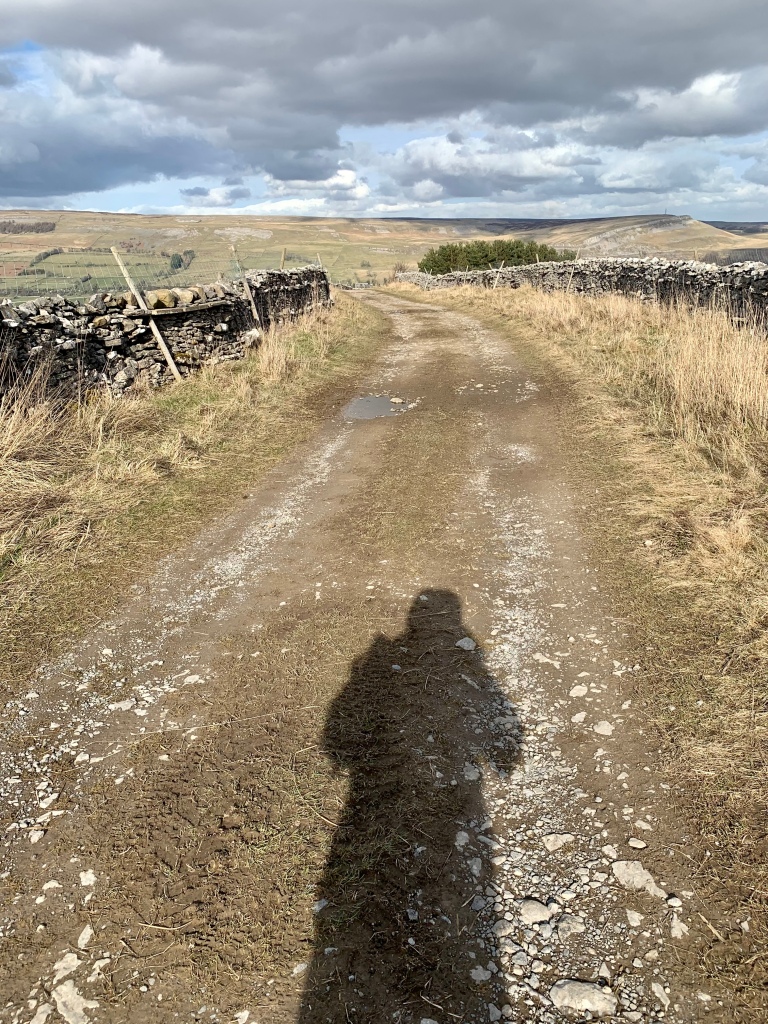
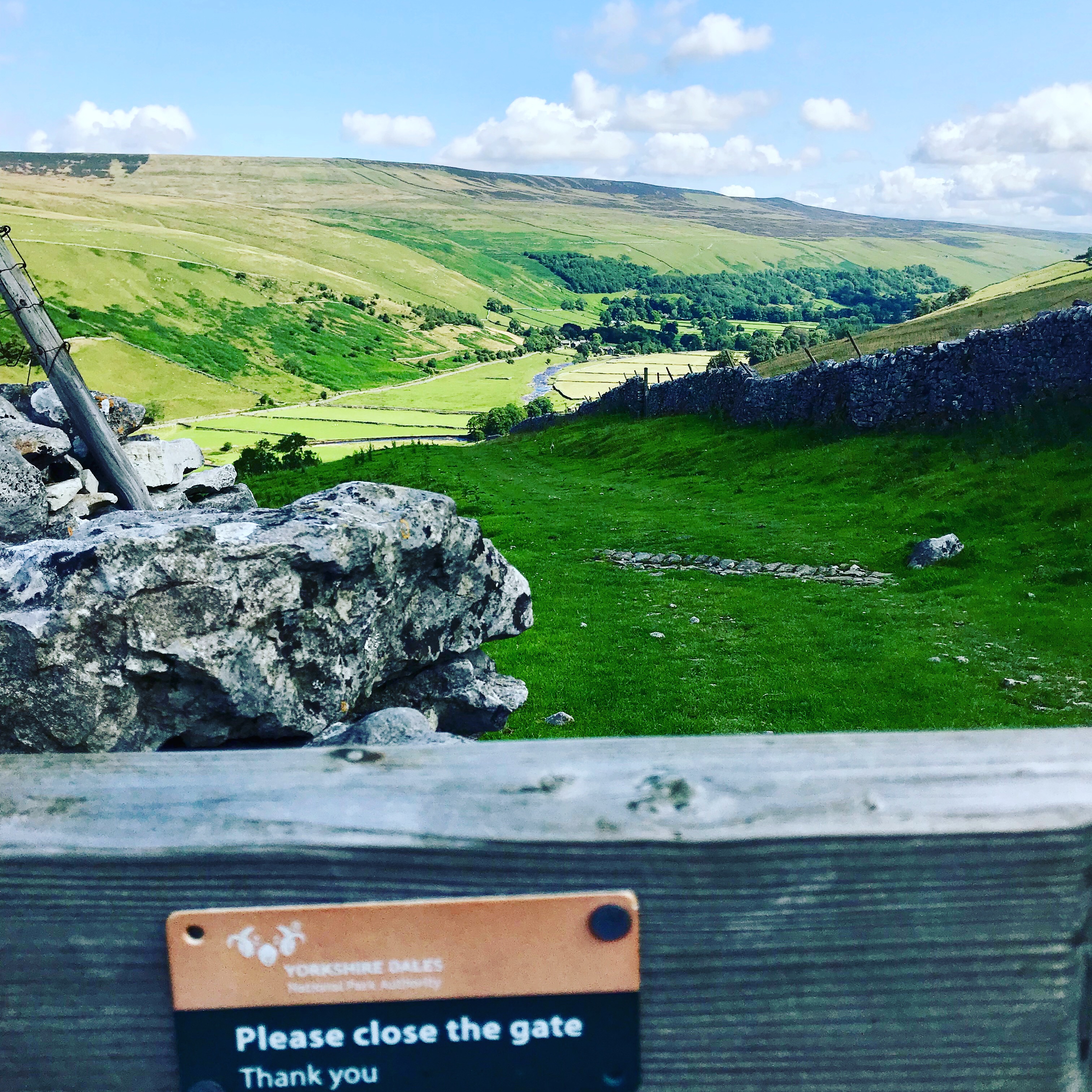

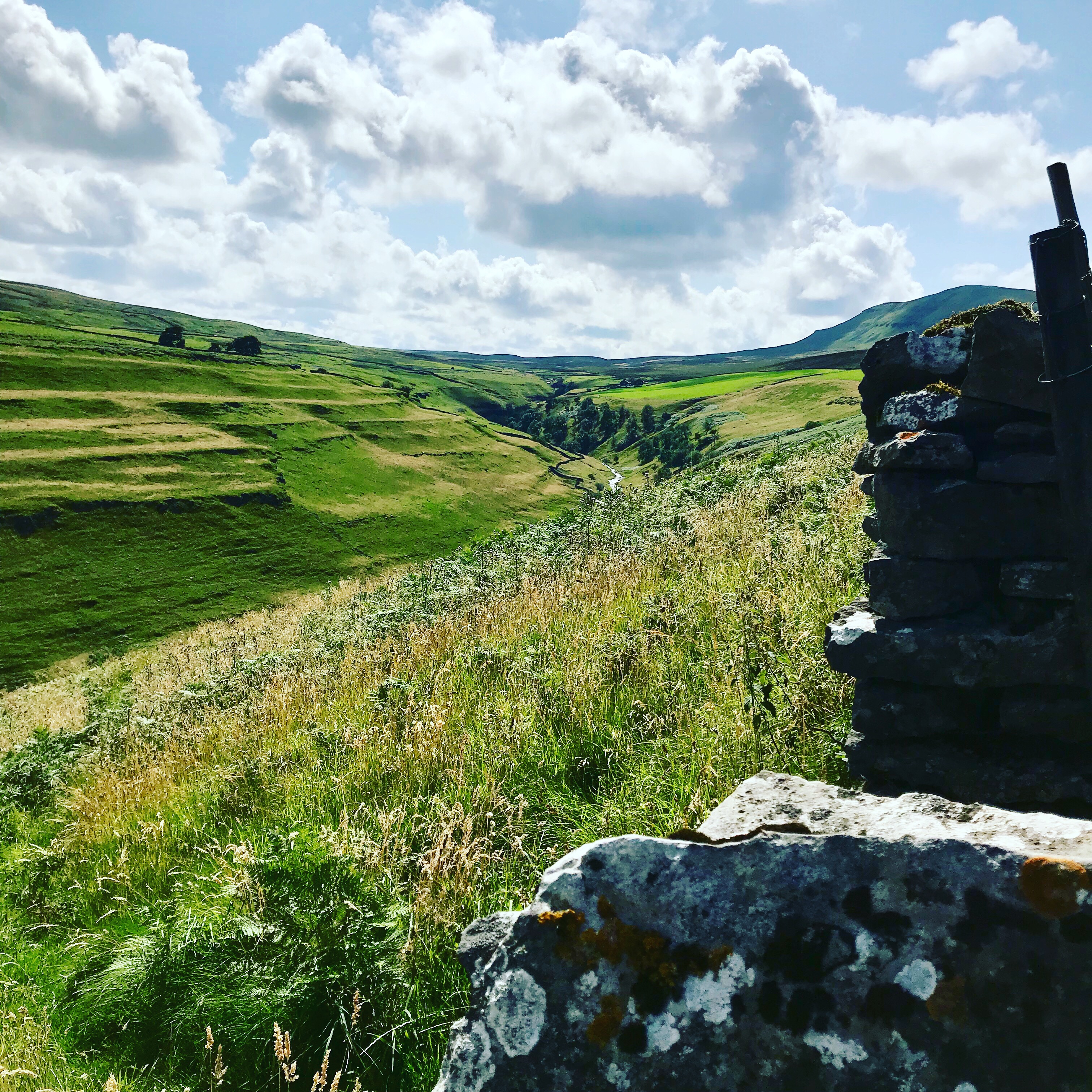




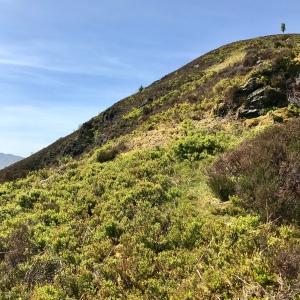


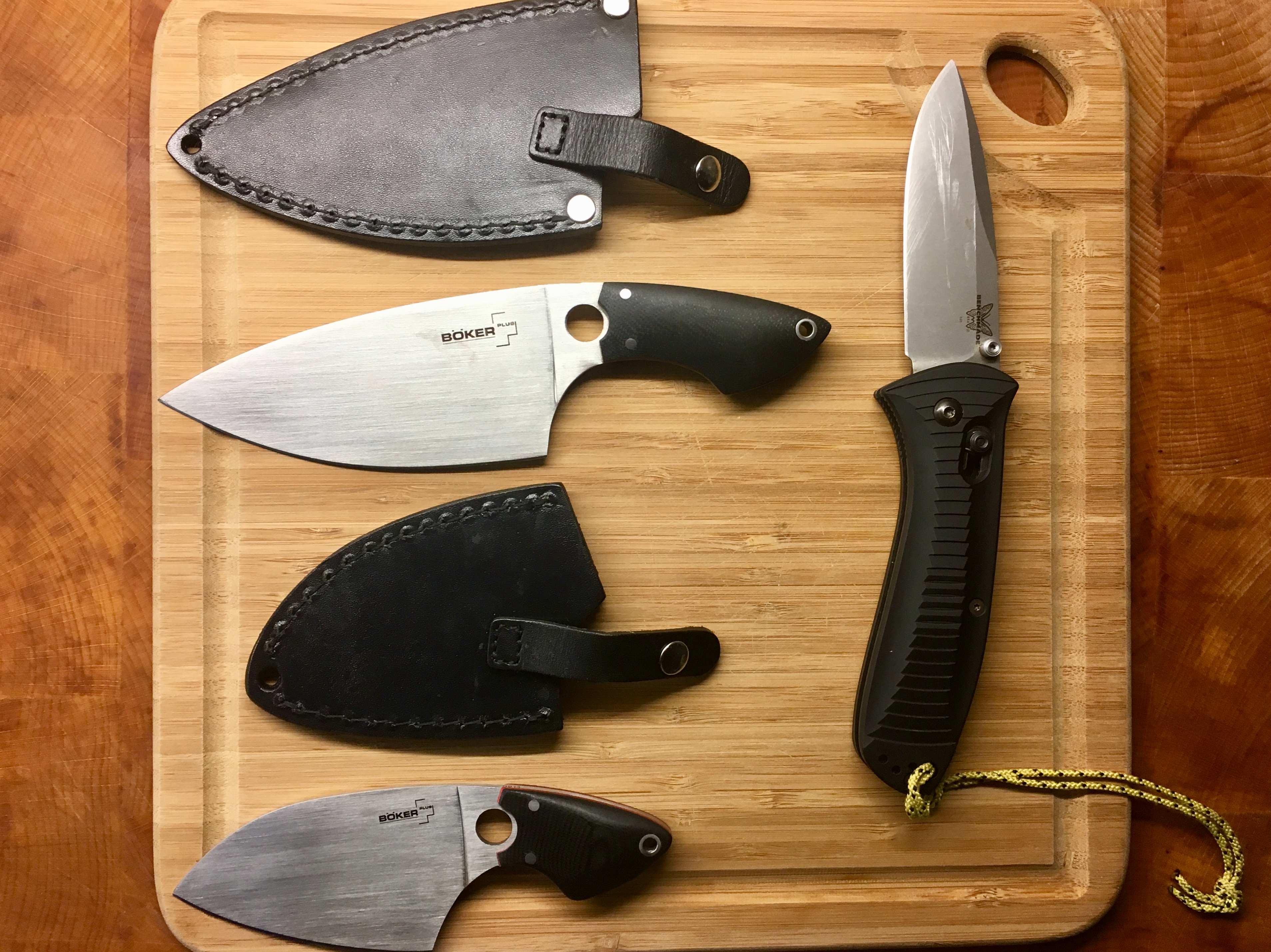



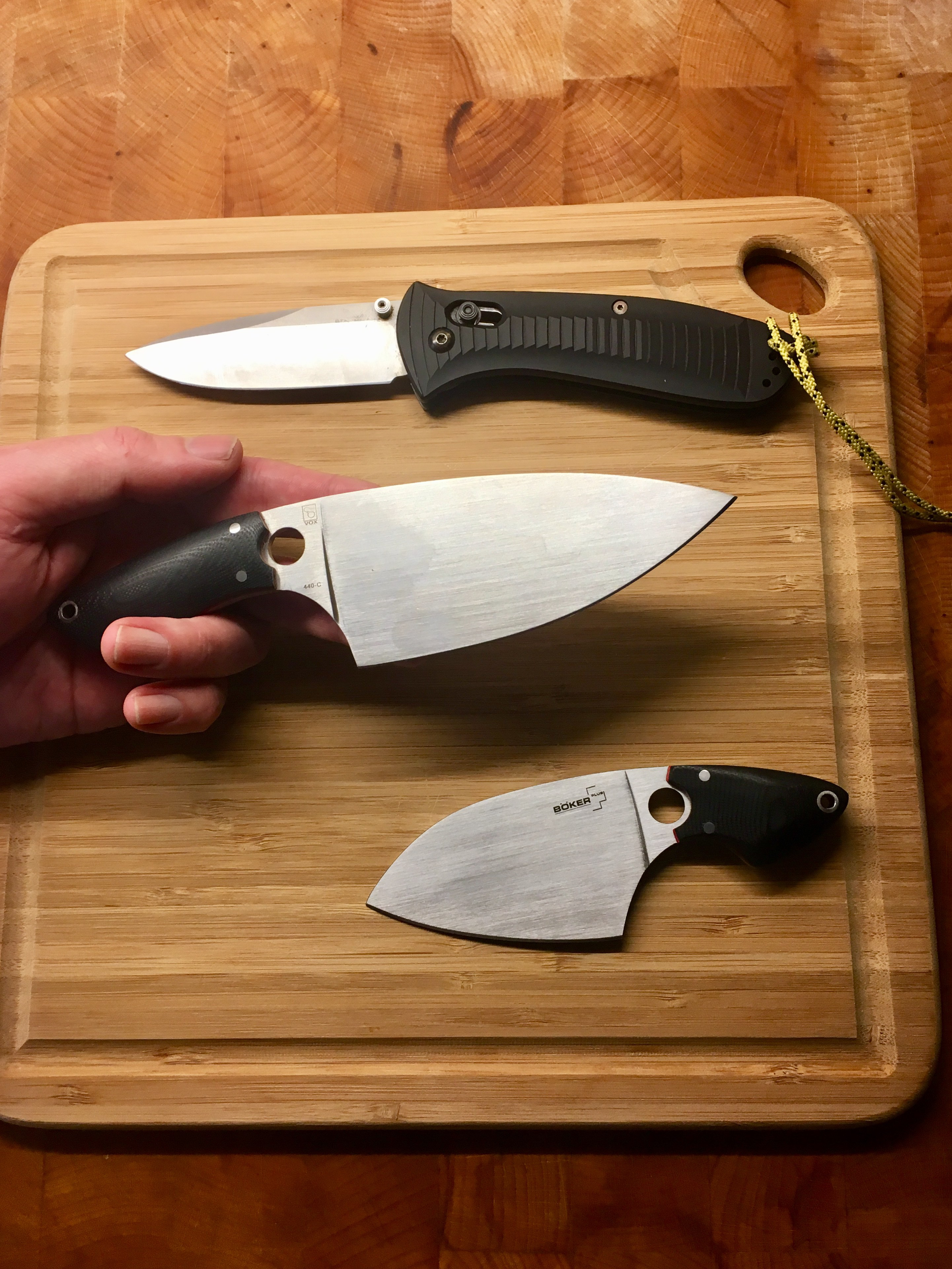

 The drawcords. They’re pretty flimsy and you have to pull about a thousand metres of cord though the cord-locks to adjust the hood or waist by about 2cm. The hood drawcords aren’t self-tailed. It’s 2018 and drawcords whirring in your face shouldn’t be a thing, not at this price.
The drawcords. They’re pretty flimsy and you have to pull about a thousand metres of cord though the cord-locks to adjust the hood or waist by about 2cm. The hood drawcords aren’t self-tailed. It’s 2018 and drawcords whirring in your face shouldn’t be a thing, not at this price.
 does move well and keeps my head dry and out of the wind. You can button it up at the chin but leave the chest zip unfastened if you want to batten down the hatches but still have some ventilation.
does move well and keeps my head dry and out of the wind. You can button it up at the chin but leave the chest zip unfastened if you want to batten down the hatches but still have some ventilation.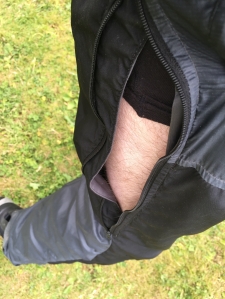
 make a cup of coffee, grind your preferred weight of beans (16g for me) fairly finely, pour into the inverted Aeropress, fill with water, stir for 10 seconds, leave for 30 seconds while you fit the filter, un-invert(?) over a warmed cup and press the plunger. The bung on the plunger is sufficiently tight that you can actually achieve some real pressure as you press down. Once plunged, top up with hot water (or hot milk if white coffee is your thing). The original model was made of a rather brittle plastic, and my first one snapped around the rim of the plunger (stop it), but they’ve sorted that out on the latest version. The bung can be replaced when it starts to wear and pressure drops (so that’s what Toots and the Maytals we’re singing about).
make a cup of coffee, grind your preferred weight of beans (16g for me) fairly finely, pour into the inverted Aeropress, fill with water, stir for 10 seconds, leave for 30 seconds while you fit the filter, un-invert(?) over a warmed cup and press the plunger. The bung on the plunger is sufficiently tight that you can actually achieve some real pressure as you press down. Once plunged, top up with hot water (or hot milk if white coffee is your thing). The original model was made of a rather brittle plastic, and my first one snapped around the rim of the plunger (stop it), but they’ve sorted that out on the latest version. The bung can be replaced when it starts to wear and pressure drops (so that’s what Toots and the Maytals we’re singing about).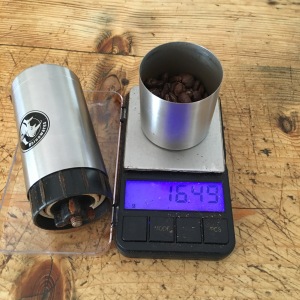 to keep everything together while you’re whirring the grinding arm round. Not to fret – I just weigh the beans in the little cup on the bottom of the grinder, tip them into the top, reattach the cup, grind briskly (it takes me around 3 minutes), take the cup back off (now full of ground coffee), tip the coffee into the Aeropress and <see above>. It’s well made – stainless steel body, ceramic burrs – easy to adjust the fineness of the grind and can be completely dismantled for cleaning.
to keep everything together while you’re whirring the grinding arm round. Not to fret – I just weigh the beans in the little cup on the bottom of the grinder, tip them into the top, reattach the cup, grind briskly (it takes me around 3 minutes), take the cup back off (now full of ground coffee), tip the coffee into the Aeropress and <see above>. It’s well made – stainless steel body, ceramic burrs – easy to adjust the fineness of the grind and can be completely dismantled for cleaning.

